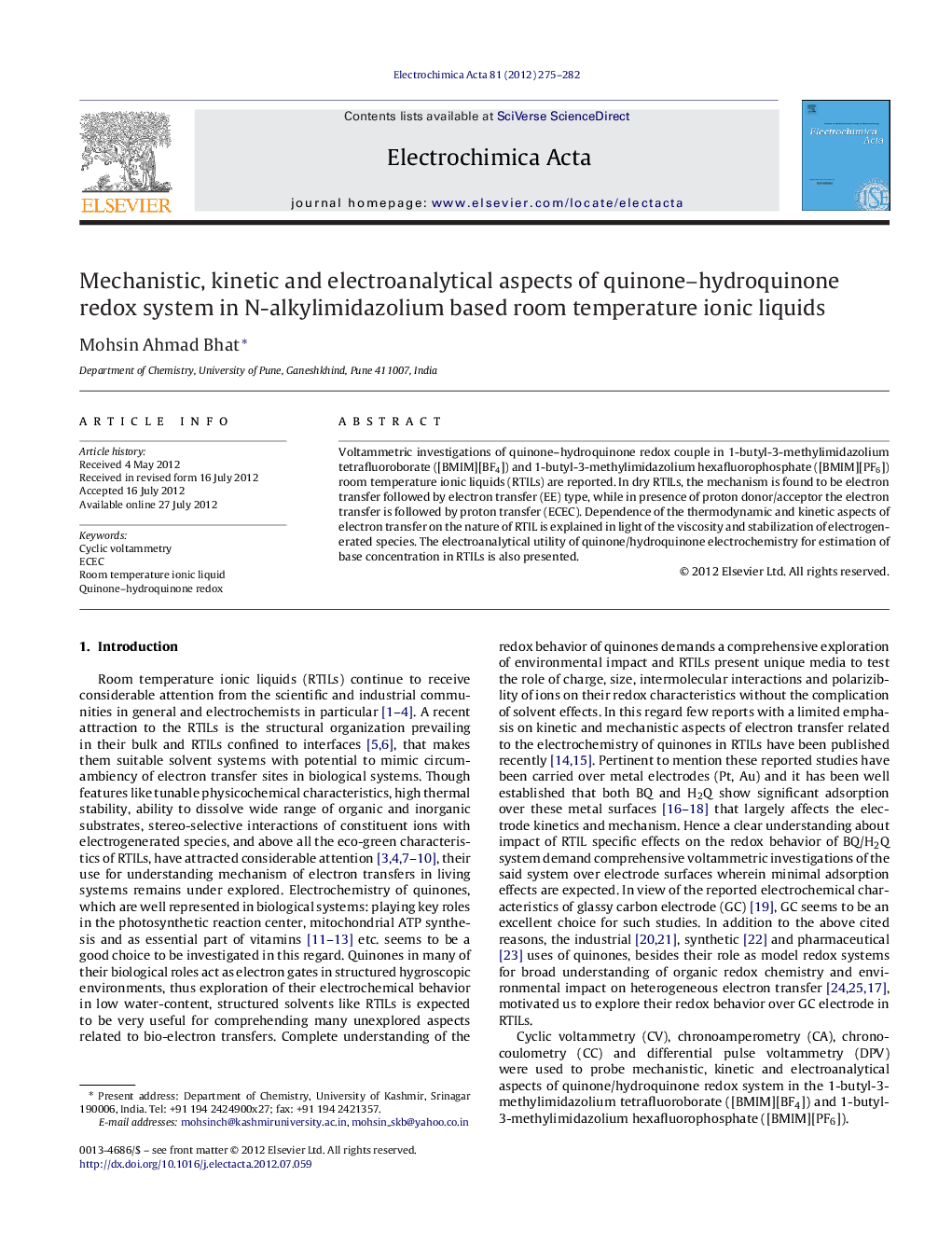| Article ID | Journal | Published Year | Pages | File Type |
|---|---|---|---|---|
| 188166 | Electrochimica Acta | 2012 | 8 Pages |
Voltammetric investigations of quinone–hydroquinone redox couple in 1-butyl-3-methylimidazolium tetrafluoroborate ([BMIM][BF4]) and 1-butyl-3-methylimidazolium hexafluorophosphate ([BMIM][PF6]) room temperature ionic liquids (RTILs) are reported. In dry RTILs, the mechanism is found to be electron transfer followed by electron transfer (EE) type, while in presence of proton donor/acceptor the electron transfer is followed by proton transfer (ECEC). Dependence of the thermodynamic and kinetic aspects of electron transfer on the nature of RTIL is explained in light of the viscosity and stabilization of electrogenerated species. The electroanalytical utility of quinone/hydroquinone electrochemistry for estimation of base concentration in RTILs is also presented.
